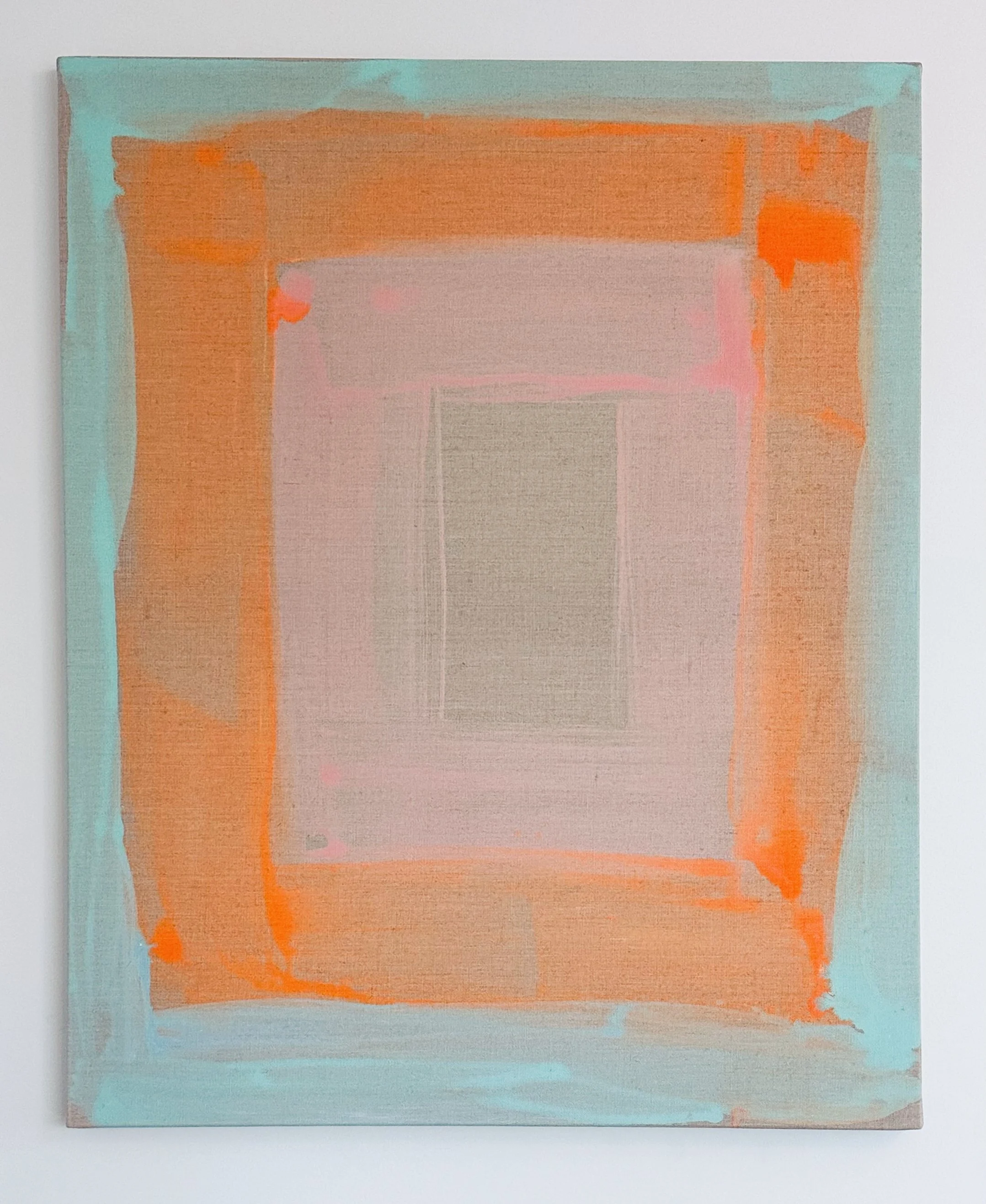Wonderland #2, 2025
Acrylic on linen, 81 x 65 cm / 34 x 27 in
Velocity (Film Still), 1998. C-Print, 30 x 40 in
Amden (Dress), 2003. 30 x 30 in
Sarah Rossiter works across painting, photography, and sculpture, investigating perception, presence, and how consciousness manifests through color and form. For the past fifteen years, her practice has centered on painting as both material and metaphysical inquiry.
Her current body of work explores two parallel investigations: geometric paintings that function as portals, and photographs that document the body's relationship to painted surfaces. The geometric works—concentric rectangles of transparent acrylic on linen—reference color field painting, tantric art, and architectural thresholds. Painted freehand, these pieces maintain the trace of the hand while achieving formal alignment that creates perceptual calm. When lines hold "true" to the canvas edge, the eye settles, and the center activates as an opening—or void—a presence created through absence. Working with subtle, often muted color on raw linen, these paintings embrace emptiness as content—the void at the center becomes the subject, activated by the chromatic and structural relationships surrounding it. The paintings on primed white linen, however, shift toward more graphic territory—vibrant, pop-inflected compositions that riff on Mary Heilmann's playful geometry and Joseph Albers' chromatic investigations while engaging contemporary visual culture with an irreverent sensibility.
In her photographic work, Rossiter layers discarded abstract paintings over her body, creating images that collapse distinctions between painter, painting, and landscape. These works extend her long engagement with the body as subject while shifting focus from representation to process—the body becomes an instrument through which paint's material and chromatic properties are experienced.
Drawing from lineages that include Hilma af Klint, Barnett Newman, Kenneth Noland, Rossiter approaches painting as a receptive practice. Her process involves entering states where form and color emerge intuitively rather than through predetermined planning. This echoes the generative emptiness central to tantric diagrams—space as potential rather than absence. The work investigates how sustained formal inquiry—working with reduced vocabularies of geometry, gesture, and color—opens possibility rather than foreclosing it.
Rossiter's practice has consistently explored thresholds: between presence and absence, body and landscape, making and observing. Her early performance-based photography in 1990s New York examined the female body in relation to art history and cultural objectification. Following the events of September 11, 2001, her work shifted toward nature and architecture as sites of consciousness. Large-scale photographic installations in Los Angeles and Italy (2006-2010) presented crystals, water, and trees as abstract visual fields capable of transmitting awareness.
After returning to painting in 2010, Rossiter developed an abstract practice grounded in direct experience and nomadic movement between California, New York, Hawaii, Mexico, and Paris. Her 2025 exhibition Imprint at Febo & Dafne Gallery in Turin presented gestural monoprint paintings exploring transience and geographic displacement. The current geometric work, titled Wonderland, marks a formal shift while continuing the investigation of painting as experiential site rather than representational field.


